Let’s compare two scenarios – each one takes place in a first grade classroom, during the literacy block:
Teacher A’s Classroom:
- Teacher A teaches a whole-group lesson on inferring character traits, using a familiar readaloud.
- Teacher A meets with a guided reading group. The focus strategy is reading in smooth, fluent phrases.
- Teach A meets with another guided reading group. The focus strategy is using context clues to figure out what a new vocabulary word means.
- Teacher A meets with two students for individual reading conferences. She works on decoding words in chunks with one student, and retelling the beginning, middle, and end with another student.
Teacher B’s Classroom:
- Teacher B teaches a whole-group lesson on inferring character traits, using a familiar readaloud.
- Teacher B meets with a guided reading group. The focus strategy is inferring character traits.
- Teacher B meets with another guided reading group. The focus strategy is inferring character traits.
- Teacher B meets with two students for individual reading conferences. She works on helping them infer character traits in the books they are reading.
Without even setting foot into one of these classrooms (they are made-up, anyway!), can you guess whose students walked away with a better understanding of a reading strategy?
My answer is: Teacher B’s students – because she modeled and gave students practice with a single strategy throughout the day (inferring character traits).
To be completely honest, though, I have been much more “Teacher A” than “Teacher B.” Sometimes my strategy instruction is all over the place.
My kids DO learn strategies eventually, but wouldn’t it be best if we had a single, clear focus for the entire reading block each day?
Well, yes….and no. Here’s the thing: the description of Teacher B’s classroom sounds simple and lovely. Everyone is working on the same strategy throughout the literacy block.
But here’s the reality: Our kids have different needs. We often have a HUGE range of readers at different levels.
A few years ago, I worked at a school where we were required to teach the exact same skill in whole group, guided reading, and during our intervention block. I was teaching second grade at the time, and I started the school year with one student reading at Level C, and another reading at Level N.
As you can probably imagine, my readers at the lower levels were not always ready to grasp something like character traits (even when the text was read aloud for them, and they were given support). They needed more work with skills like identifying the characters, or inferring how characters feel.
The other problem I encountered was that emergent / beginning-level texts don’t lend themselves to teaching certain strategies.
The characters in a Level C or Level D book, for example, are flat (2-dimensional, with very simple personalities). I just couldn’t teach a guided reading lesson on character traits with a Level C or Level D book, because the texts weren’t substantive enough for me to do so.
I had to choose between a) “following the rules” and teaching the exact same strategy with every group of kids, or b) meeting the needs of my readers.
Can you guess which one I chose? 😉
Like you, I live in the real world and work with real students. And I firmly believe that creating complete continuity throughout our literacy blocks is ideal, but – unless you have a truly homogenous group of students – it’s somewhat impractical.
So what do we do about this?
Keep reading to find out my personal solution to this problem – and to download some free resources!

Photo Credit: Pikselstock, Shutterstock
Structuring a Unit
First of all, I generally prefer to structure my reading units by genre. (I’ve also done it by comprehension strategy, like in my K-1 units.) However, for the sake of this post, let’s assume we are teaching in genre units.
When I sit down to outline a unit, I list the reading skills / strategies (decoding, fluency, comprehension, vocabulary) that will help my students become more proficient with reading in this genre.
At this point, I’m just thinking about the key skills that I want ALL students to master or almost-master during the unit. Where I live, we use the Common Core Standards, so those standards account for quite a few of those key skills.
Creating Continuity
Once I’ve created that list of key skills, I then break down each skill even further.
First, I ask myself, “What skills will students need to have mastered (or almost-mastered) before they can learn this key skill?”
Going back to the character traits example, I think that students need to work on most of or all of these strategies before they can truly be successful with character traits:
- Identifying the characters in a story
- Identifying the main character
- Inferring a character’s feelings by using the pictures
- Inferring a character’s feelings by using the pictures and print
- Supporting inferences about characters by using the pictures and print
- Inferring and explaining simple character motivations (why a character did or said something)
Now, I don’t think that kids have to perfect all of these strategies before they can work on character traits. They will still benefit from whole-group instruction and modeling on character traits.
But when we are working with some of our students in small groups or individually, we are probably going to have to focus on some of the foundational “building block” skills before they will be successful with inferring character traits.
Next, I consider what skills go beyond that key understanding. I ask myself, “What strategies can I teach my “high” students after they master the key skill?”
Here are some examples of skills that go beyond inferring character traits:
- Inferring character traits and supporting them with text evidence (orally and/or in writing)
- Using information about character traits to predict what a character will do next
- Comparing and contrasting characters’ traits in different texts
- Sharing and justifying opinions about characters and characters’ choices
In reality, I may not need to adjust my strategy instruction too much for my “high” kids, because I can just give them more complex or challenging texts to work with. They may still need to practice inferring character traits when they are reading a text with highly complex characters.
Putting It All Together
Once I’ve broken down each essential skill in this way, I have a continuum. There’s an essential skill in the middle, with easier skills preceding it (above) and more difficult skills following it (below).
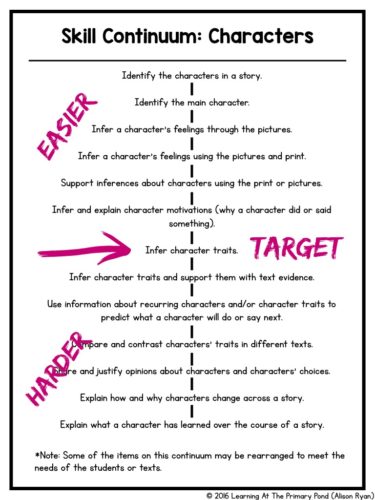
In my whole group instruction, I focus on the essential skill. I use modeling, think alouds, and partner support to try to make the strategy as accessible as possible to ALL my students.
During small group, guided reading, and individual conferences, I reinforce that same strategy to as many students as possible. But we only work on the same strategy if:
- The strategy is “within reach” for students (not too difficult and not too easy)
- The books they are reading are complex enough so that we can actually practice the strategy (I can always do a readaloud or shared reading with a more complex text in a small group – but kids do need to spend lots of time reading books near their instructional levels)
This small group or individual instruction gives many of my students more practice (and guided practice) with the essential skill.
However, as I mentioned before, there are likely some students who need to practice strategies that are related but less complex. I use the skill continuum to find a related, supporting strategy that better fits those students’ needs.
Similarly, I may need to use the skill continuum to find a related strategy to challenge my higher students.
Final Notes
I’ve started using these strategy continuums as a guide, but I don’t follow them in lock-step. I created them myself, so they are obviously not perfect!
Additionally, students’ learning is not always perfectly sequential. Jumping around a bit on a continuum is sometimes necessary.
I also never exclude students from receiving instruction on grade-level appropriate strategies. That whole-group exposure can be really beneficial – I just need to make some slight adjustments in other instructional settings to better meet the needs of some of my students.
Oh, and one other thing – I’ve used the terms “skill” and “strategy” somewhat interchangeably in this post and in many of my posts. And that’s kind of incorrect – sorry! Here’s the difference:
- A strategy is something applied consciously. When you’re learning to ride a bike, you might have to carefully think about keeping your torso upright and stable.
- A skill is something applied automatically. Once you know how to ride a bike, keeping your torso upright and stable comes naturally, and you don’t have to think about it.
I’ve known the difference for a while, but the terms are so often interchanged in conversation that I do it myself, too. 😮 I’ll work on that! You can read this article by Afflerbach, Pearson, and Paris if you’re curious why the terminology matters.
Anyway, if you’d like to try out these skill continuums for free, just put your information in the boxes below! I ask for your email address so that if I add more continuums in the future, I can easily send them to you.
I would love to hear what you think, and how it goes if you try these out in your own classroom – just leave a comment below. Happy teaching!

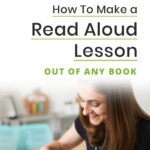

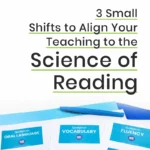
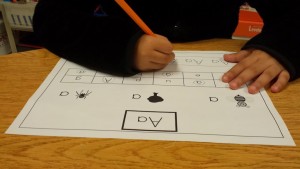
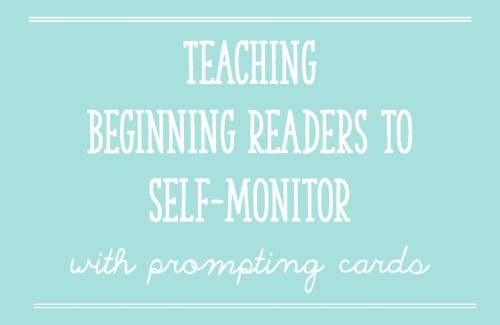
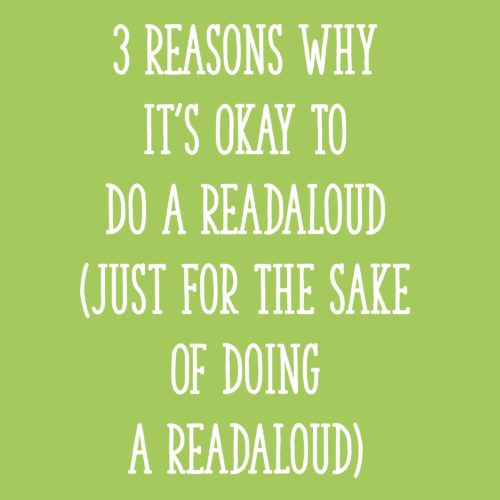






Thank you so much for these! I have been anxiously waiting for them since you mentioned them in your webinar. They are going to be so helpful!
I seem to be missing something…..I clicked on the link in the email, which brought me to this great article. However, I cannot find the link for the free skills continuum. Every link leads to something else.
Hey Deb! There are two little boxes at the very end where you put in your info – let me know if you don’t see them!
Alison
This is awesome! I feel like everything you described was exactly how I’m thinking and what I’m struggling with! I can’t wait to use this! Thank you so much!
This looks great, easy to follow!
Looks great! I like how you have broken things down, great building blocks
These are AWESOME! Thank you so much for sharing them. I believe these will truly come in handy as I work with guided reading groups – and showing student progress. WOW! I love them. You’re a ROCK STAR!
Thanks, Karen! So glad you like them!!
great aha moment about using the terms correctly!
Where is the link? It keeps sending me the article.
Hey Sandy, did you see the little boxes at the end of the post to submit your information? Let me know if you can’t find them!
Alison
Thank you for all the helpful information!
Is there a way to get the reading continuum emailed to me – I signed up and got the writing one, but I didn’t get the reading when when I tried to sign up for that one as well.
Sure! If you already put in your info and it didn’t come thru, just email me at Alison@LearningAtThePrimaryPond.com.
Alison
Hi Alison, thank you for sharing this resource. I added my email and received a link to request access. Thanks again